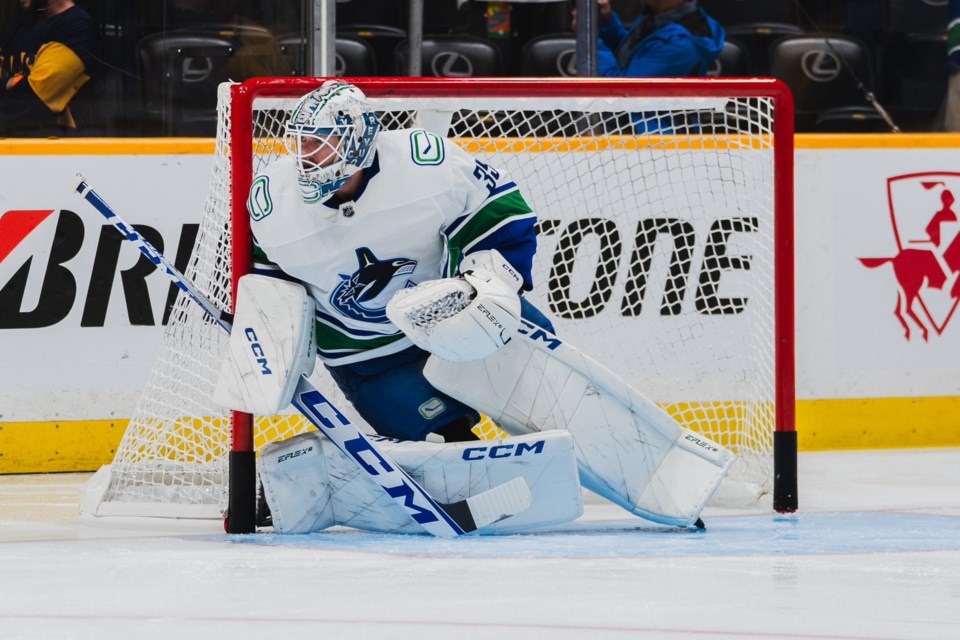“We have a playoff team if everything goes right,” said Vancouver Canucks president of hockey operations Jim Rutherford ahead of the season.
While that wasn’t the biggest vote of confidence from Rutherford, the Canucks’ confidence to kick off the season seemingly couldn’t have been any higher. Through their first eight games, the Canucks are off to a 5-2-1 start to the season, good for second place in the Pacific Division, with a plus-12 goal differential that ranks third in the entire NHL.
To get there, however, a lot of things have had to go right. Maybe not “everything,” like Rutherford said, but most things.
At 5-on-5, for instance, the Canucks have out-scored their opponents 20-to-9, giving them the best 5-on-5 goal differential in the entire NHL at plus-11. The question is, how much of that is due to the Canucks legitimately outplaying their opponents and how much of it is luck?
One way that luck has typically been measured in the NHL is with the PDO statistic, which combines shooting percentage and save percentage at 5-on-5. Since 100% of shots on goal result in either a save or a goal, the average PDO is logically 100%.
If a team is significantly below or above 100% — often written as 1.000 when discussing PDO — then the team could be said to be “lucky.”
The Canucks are well above 100%. In fact, they have the best PDO in the NHL at 1.075.
A high PDO comes from two sources: a high shooting percentage or a high save percentage.
For the Canucks, it’s both. You can view either ranking by clicking the legend in the chart above, but suffice it to say the Canucks lead the NHL in 5-on-5 shooting percentage and are third in the NHL in 5-on-5 save percentage.
In other words, everything has been going right for the Canucks, at least at 5-on-5. A higher percentage of Canucks shots are hitting the back of the net than the rest of the NHL and they’re just shy of getting the best 5-on-5 goaltending in the NHL.
But how long can that continue?
The Canucks have an above-average goaltending tandem anchored by the elite Thatcher Demko, so they can at least hope that the save percentage side of their PDO will remain strong, if not the .946 save percentage they’re currently maintaining.
The Canucks also have some excellent shooters in their top-six, so maintaining an above-average shooting percentage is not unreasonable either. It’s just that even if the Canucks are elite in both categories, they’re likely to regress.
Let’s be clear: “luck” comes in many forms in the NHL. It could be a goaltender on a hot streak making saves he has no business making. It could be a run of pucks banking in off skates in front of the net. It could be a shooter riding a confidence high putting every puck into the top corner.
What we do know is that a team’s PDO tends to regress towards 1.000 over the course of a season.
The best PDO in the NHL last season belonged to the Boston Bruins at 1.035 and that was absurdly high — the next best was 1.015. The season before that, the highest PDO in the NHL was 1.024 for the St. Louis Blues. And those are the best PDOs over the course of a season where everything has gone right.
In other words, the Canucks are not going to ride a 1.075 PDO for the rest of the season.
That means the Canucks need to start consistently doing what they’ve managed to do their last three games: controlling puck possession and out-shooting their opponents at 5-on-5.
The Canucks have been out-shot this season 167-to-156 at 5-on-5 and they’ve been out-chanced as well, with a 46.2% expected goals according to Natural Stat Trick, which ranks 27th in the NHL.
Over the last three games, however, the Canucks have dominated at 5-on-5. They out-shot the Nashville Predators 23-to-14 at 5-on-5, the St. Louis Blues 28-to-12, and the New York Rangers 26-to-18. In all three games, they won the expected goals battle by a wide margin, significantly out-chancing their opponents.
That’s the key to winning games without relying on luck, without needing the percentages to go your way.
That’s how you make the playoffs without needing everything to go right.



